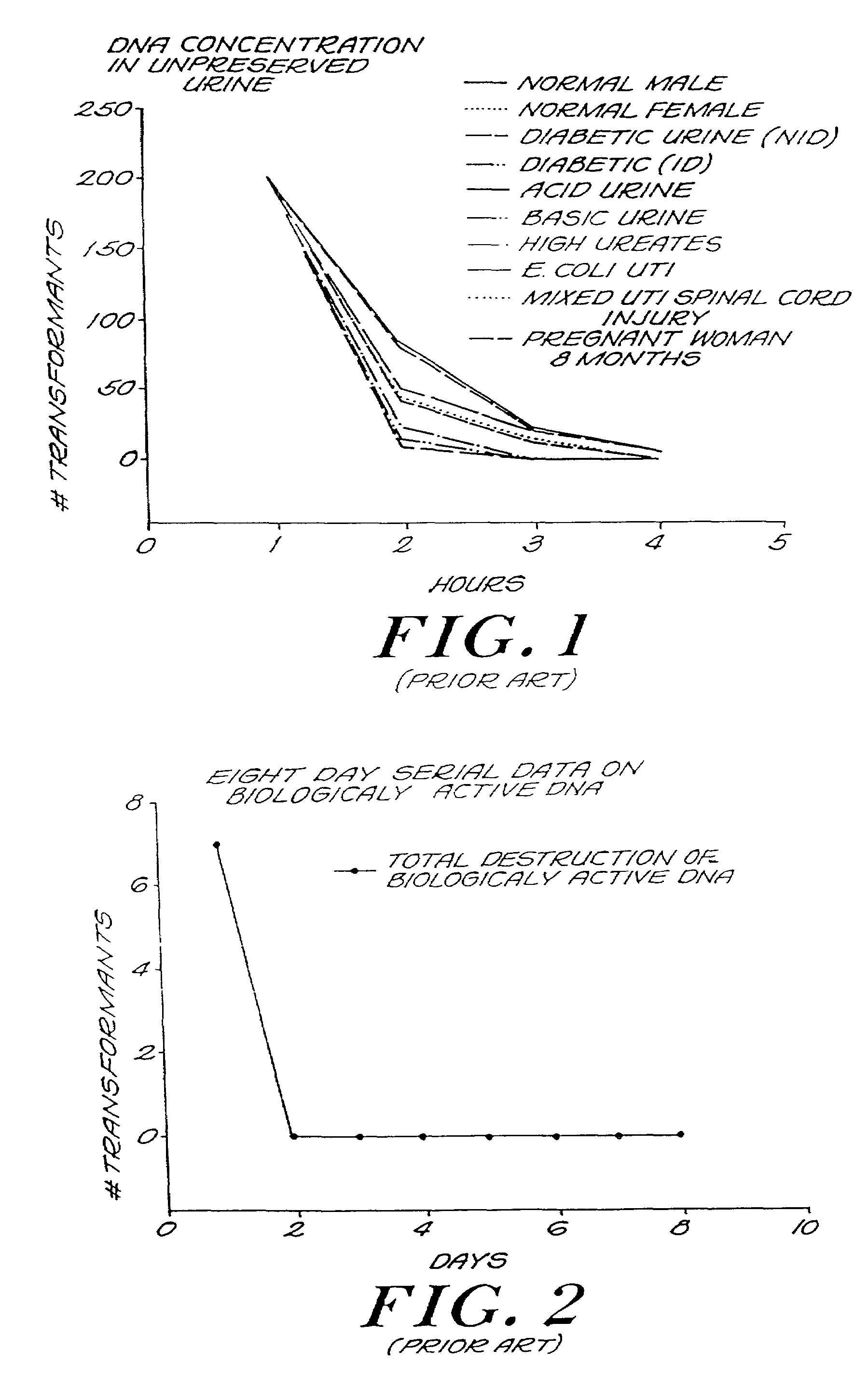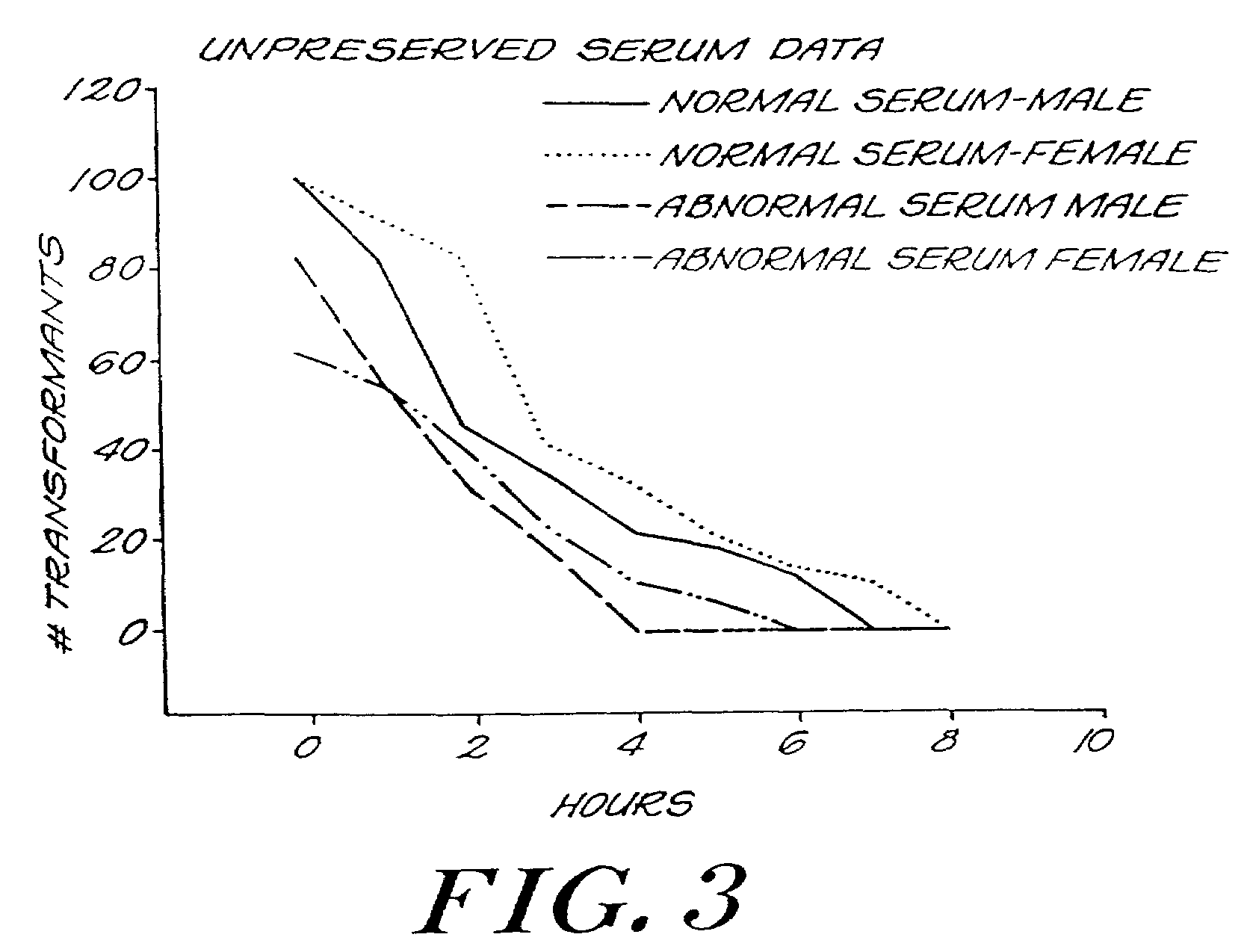Removal of molecular assay interferences
a molecular assay and interference technology, applied in the field of dna analysis, can solve the problems of reducing compromising the efficiency of amplification reaction, and many pcr procedures yielding non-specific by-products, so as to improve the signal response of a molecular assay, and improve the effect of amplification efficiency
- Summary
- Abstract
- Description
- Claims
- Application Information
AI Technical Summary
Benefits of technology
Problems solved by technology
Method used
Image
Examples
example 1
PCR Detection of Penicillinase-producing Neisseria Gonorrhea
[0065]The PCR signal-enhancing effect of the reagents of the invention is demonstrated by the following example. Four varieties of TEM-encoding plasmids are found in PPNG. These are the 6.7 kb (4.4 Mda) Asian type, the 5.1 kb (3.2 Mda) African type, the 4.9 kb (3.05-Mda) Toronto type and the 4.8 kb (2.9-Mda) Rio Type. This PCR assay for PPNG takes advantage of the fact that the TEM-1 gene is located close to the end of the transposon Tn2; by the use of one primer in the TEM-1 gene and the other in a sequence beyond the end of Tn2, and common to all four plasmids, a PCR product only from plasmids and not from TEM-1 encoding plasmids was obtained. (Table 1, below) The conditions associated with this protocol were modified to include the reagent of the invention in the hybridization and the treated probe was mixed with the 761-bp amplification product per standard PCR protocol. The results were read at A450 nm.
Materials and R...
example 2
[0094]Inhibition of amplification is a significant problem with STD specimens from both cervical and urethral sites. Based on a review of the literature, estimates of inhibition range from 2-20% for specimens collected with a swab. This experiment compares a novel swab collection device containing a reagent of the invention to a standard dry swab collection device and demonstrates that reagents of the invention can be utilized to significantly minimize the effects of inhibition, thereby reducing the incidence of false negative results.
[0095]The swab device used was a sterile polyurethane sponge impregnated with 700 μl of the reagent of Example 1, which is housed in the bottom of an empty sterile tube. The specimen is collected on a separate sterile rayon swab and inserted into the above tube (Starplex). Once the swab has been inserted in the tube, the swab comes into contact with the sponge and absorbs the reagent, which treats the specimen accordingly. The control device used for c...
PUM
| Property | Measurement | Unit |
|---|---|---|
| Molar density | aaaaa | aaaaa |
| Molar density | aaaaa | aaaaa |
| Molar density | aaaaa | aaaaa |
Abstract
Description
Claims
Application Information
 Login to View More
Login to View More - R&D
- Intellectual Property
- Life Sciences
- Materials
- Tech Scout
- Unparalleled Data Quality
- Higher Quality Content
- 60% Fewer Hallucinations
Browse by: Latest US Patents, China's latest patents, Technical Efficacy Thesaurus, Application Domain, Technology Topic, Popular Technical Reports.
© 2025 PatSnap. All rights reserved.Legal|Privacy policy|Modern Slavery Act Transparency Statement|Sitemap|About US| Contact US: help@patsnap.com



